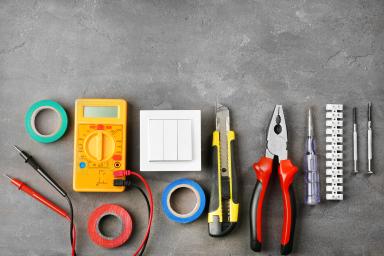How to Prepare Your Home for Natural Disasters
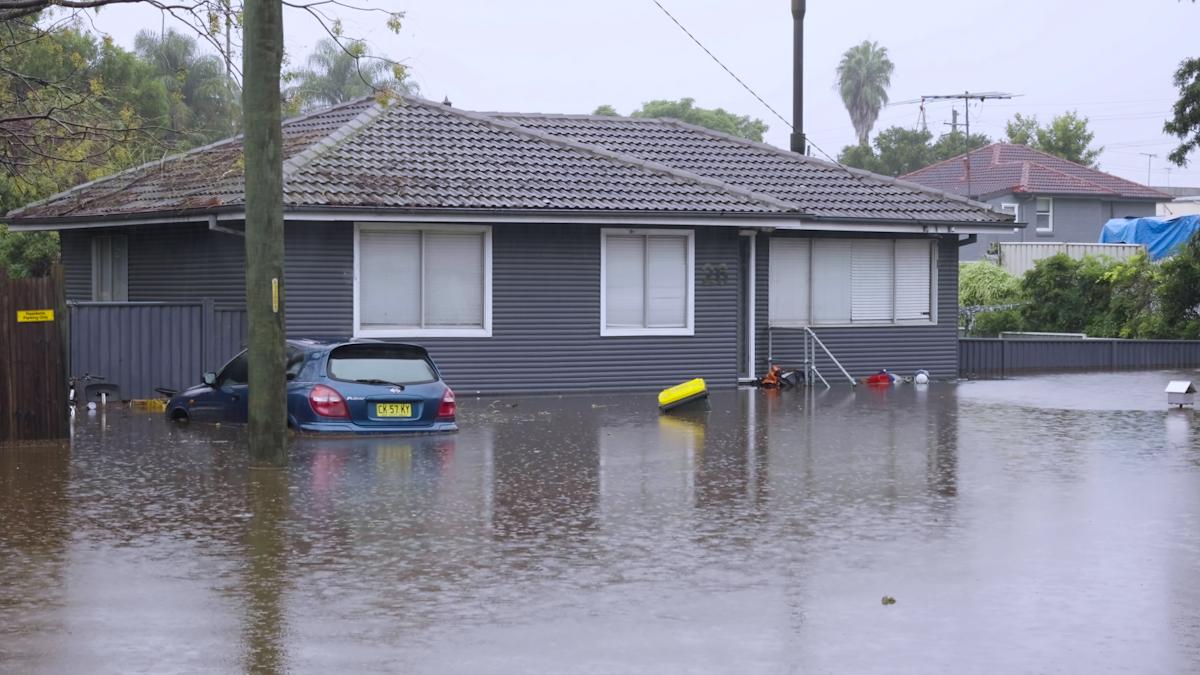
Your home is the center of your life. It’s your small, personal space in a large world. It’s where your children take first steps and say first words, where you rest and rejuvenate, and where you make memories. And if you're not prepared, one natural disaster can wipe it all away.
Find Home Repair Services Near Me.
When you buy a home, you want to protect it. Nothing should take away your sanctuary—not bad weather or unexplainable freak accidents.
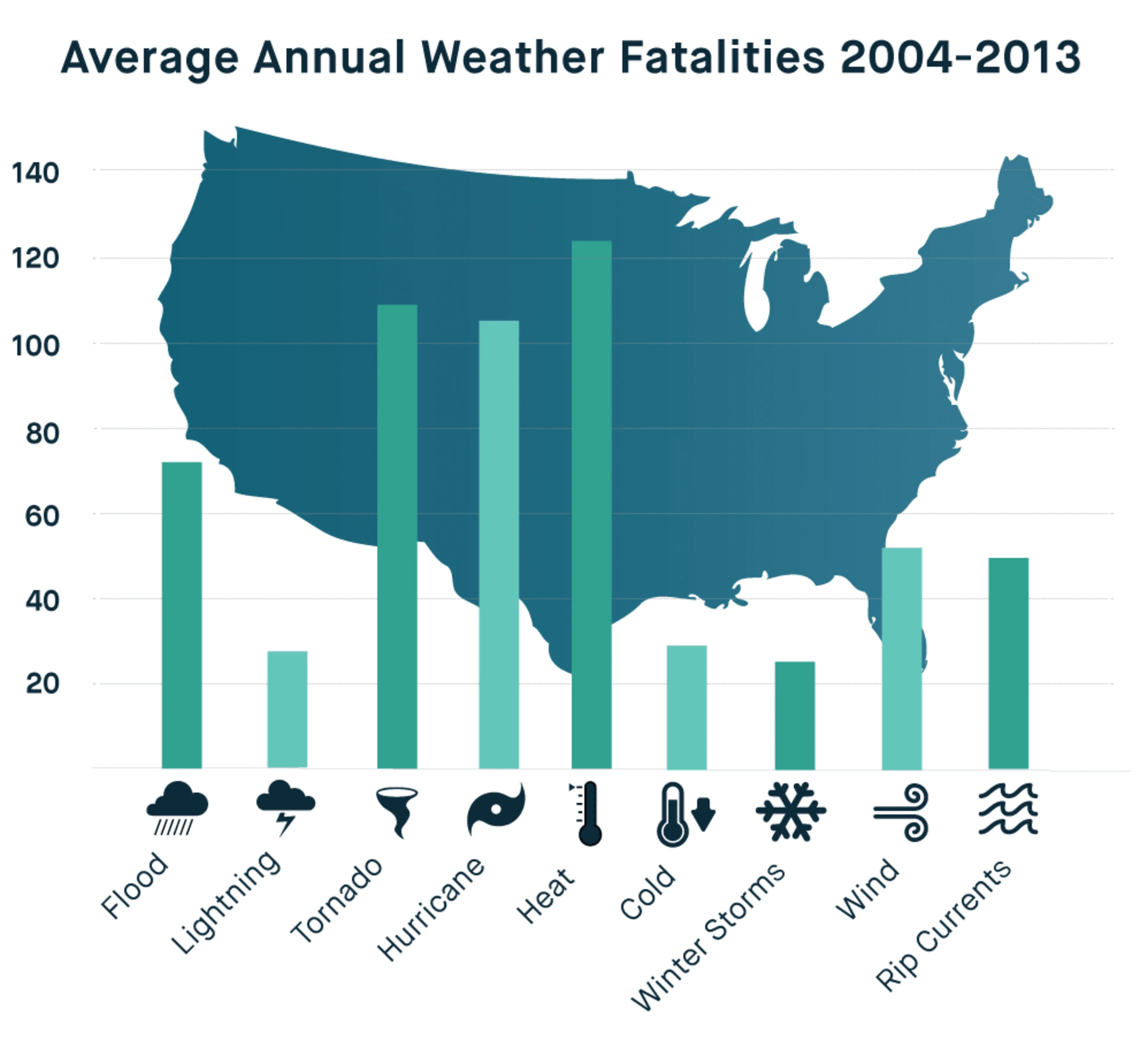
Source: http://www.nws.noaa.gov/om/hazstats/images/hazstat-chart13-lg.gif
We created this guide to help you prepare your home and family in case of an emergency, and better understand the natural disaster risks in your area. This information isn’t meant to create unwarranted fear. Instead, we hope after reading this guide you can rest better knowing your home and family are prepared for any situation that may arise.
Hurricane Preparedness
Hurricanes can bring torrential downpours, winds of over 150 MPH, severe thunderstorms, and flash floods. In the U.S., hurricane season spans from June to November and affects the Atlantic and Gulf of Mexico coastlines.
The costliest hurricane in U.S. history was Hurricane Katrina in 2005. Damage totaled more than $100 billion. The deadliest hurricane was the Galveston hurricane that hit the island off the Texas coast in 1900 and killed at least 8,000 people.1
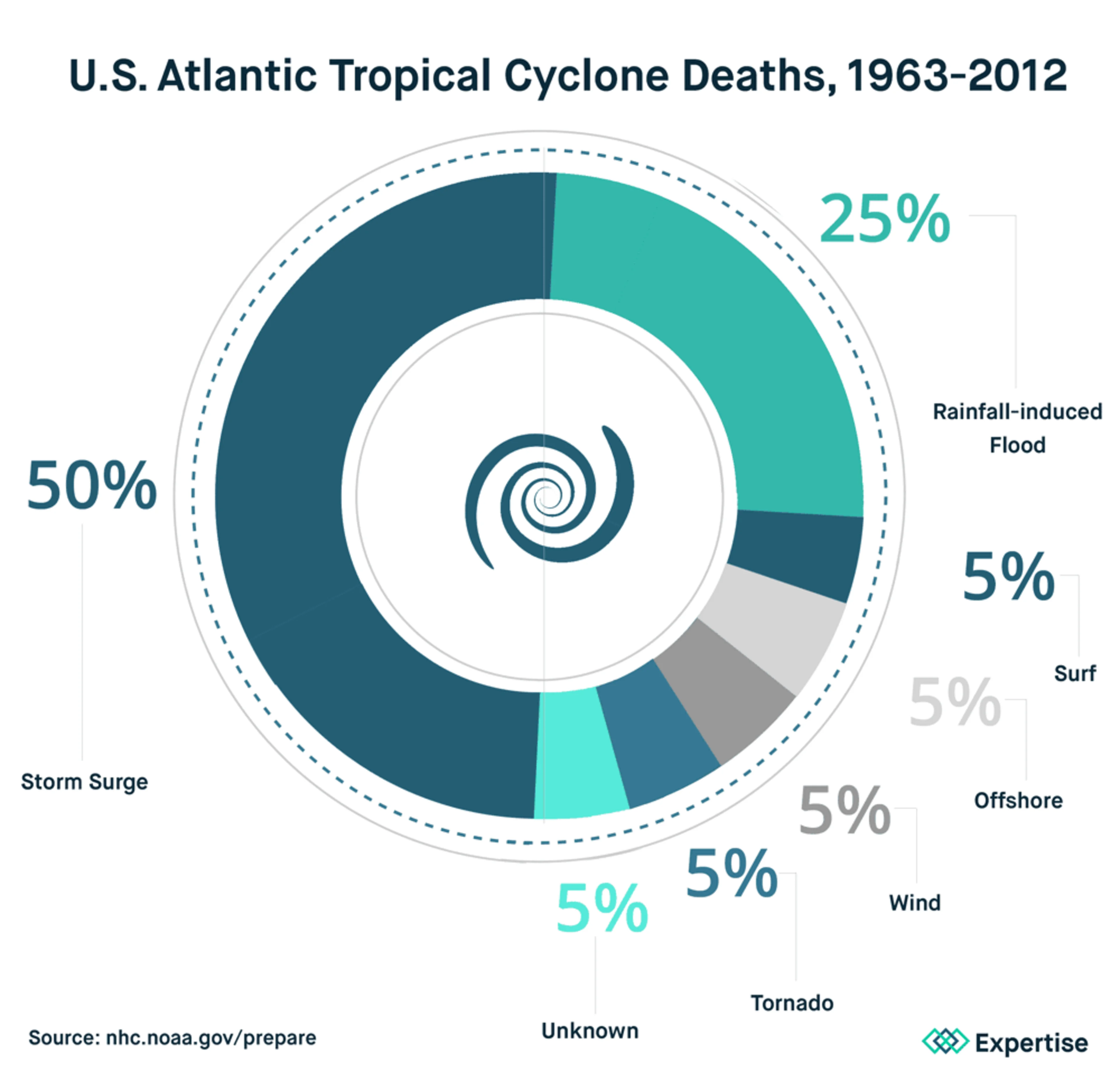
Major Hurricane Hazards
Storm Surges: The greatest threat to human lives and to property happens during the hurricane’s surge, when ocean water pushed toward the cost by swirling winds combines with a rising tide. This combination can increase the water level as much as 30 feet.2 There isn't much in the way of home remodeling to prevent storm surges, but it's important to understand the dangers of a surge.
High Winds: Hurricane and tropical storm winds can destroy buildings and cause catastrophic damage along coastlines and hundreds of miles inland. In addition to hurricane winds, tornadoes commonly form when tropical storms reach land. According to the National Oceanic Atmospheric Association, almost every tropical storm or hurricane that has come onshore in the U.S. has produced a tornado. These tornadoes often occur in thunderstorms within the storm’s spiral rainbands, far from the storm's eye, and are very weak and short-lived. For home preparation tips for high winds and tornadoes, check out our Tornado Preparedness section within this resource.
Heavy Rainfall and Flooding: Tropical storms typically bring torrential downpours or more than 6 inches, which can cause deadly and destructive floods, especially in low-lying coastal areas. Flash flooding, a rapid rise in water levels, is a major thread for inland residents who may not have time to evacuate or prepare. Please refer to our Flood Preparedness section for more information on how to keep your home safe from flood risks.
General Hurricane Preparation
Assess your home’s risks: Will your home survive a storm surge or high winds? Have a professional inspect your home, including your foundation and landscaping to get an idea of what repairs or changes you need to fortify your house.
https://www.youtube.com/embed/OwSaHc0X2KA
Remove debris: Get rid of dead trees and downed limbs. Anything in your yard could get picked up by high winds and blown into your house with extreme force.
Prepare an evacuation kit: Have a kit with water, food, clothing, extra medications, pet supplies, and first-aid supplies stored in a safe place. You should also include a battery powered weather radio and flashlight.
Understand NWS vernacular: The National Weather Service issues hurricane watches and hurricane warnings. A watch lets you know to be on the look out for a potential hurricane. It is issued because the weather conditions are favorable for a hurricane to develop. A warning requires actions. It means that there is or will soon be a hurricane.
Board windows: If a hurricane is imminent, boarding your windows will help protect your house from excess damage. If you don't have storm shutters, use plywood sheets to board your windows. Make sure they are cut to the appropriate dimensions before there is a storm warning.
Fill your car's gas tank: If you do need to evacuate your area, you don't want to waste time waiting at the pump.
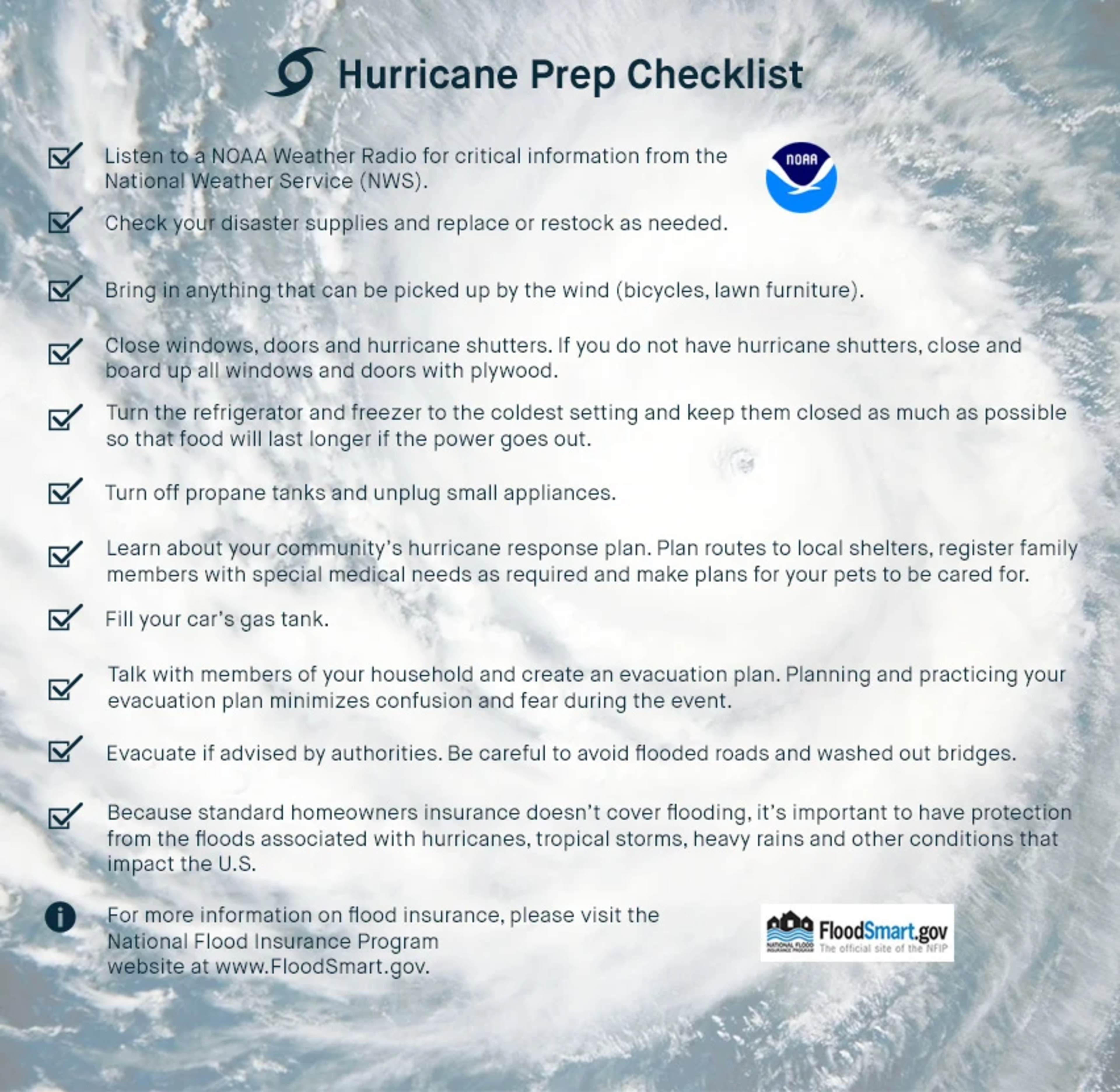
During and Immediately After a Hurricane
Maintain a water supply: Fill your bathtub and other large containers with water. This can be used for sanitary purposes such as cleaning or flushing the toilet.
Stay put: Don’t travel unless it is absolutely necessary. It’s likely that roadways will be flooded or blocked by downed trees or power lines.
Listen for updates: Use your weather radio to track hurricane updates. You’ll be able to hear about the storm’s path and get an idea of when it’s safe to emerge from your home. You’ll also hear about evacuation information as it becomes available.
Turn off your utilities: Gas leaks and electrical fires are a common hazard during natural disasters, and easily avoided if the power is shut off. In the time leading up to a hurricane, be sure to set your refrigerator to its coldest setting. This will help food stay fresh for as long as possible.
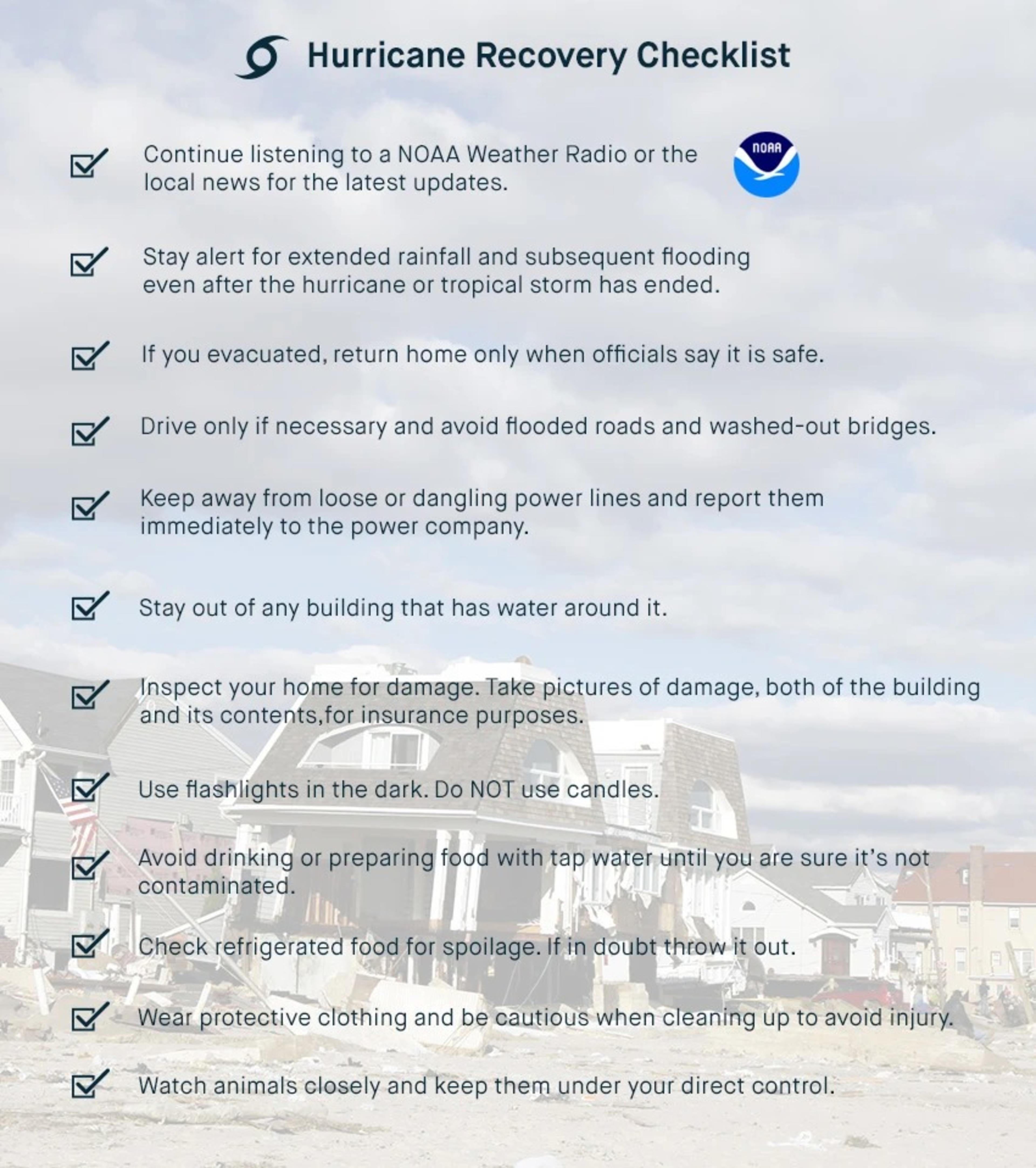
Check social media: If you don't have a radio, social media platforms such as Facebook, Twitter, and YouTube are great ways to get the latest storm and emergency updates and communicate with friends or loved ones. In an emergency, a social media post may be your best method of contacting someone for help. You can also use others' social media posts to better understand conditions in nearby areas.
To stay up to date during a hurricane, be sure to follow NOAA and the National Hurricane Center (NHC) on Facebook.
Earthquake Preparedness
Southern California seems like the epicenter for earthquake activity in the US, but nearly 150 million people, half of all Americans, live in places where earthquake shaking is enough to cause damage.

Earthquakes cause over $4.4 billion in financial loss each year in the lower 48 states, and most of the costs incurred are in Washington, Oregon, and California. But recently, fracking in the Midwest and Southwest regions have increased the frequency of local earthquakes. When wastewater produced as a byproduct of fracking is sent thousands of feet into the ground, it can affect faults that have long been dormant.
Because earthquakes cannot yet be predicted, preparation is crucial. Keep your family safe by taking simple steps to prepare your home and create a plan in case of an earthquake.
General Earthquake Preparation
Secure large furniture: Bolt tall bookshelves and media cabinets to the wall. In the event of an earthquake, the ground will shake and roll, potentially causing large furniture to fall over. You can also strap or bolt television sets to media consoles so they do not tip over. If you live in an area that is particularly prone to earthquakes, consider investing in some earthquake-proof furniture that is designed to withstand ceiling or building collapse.
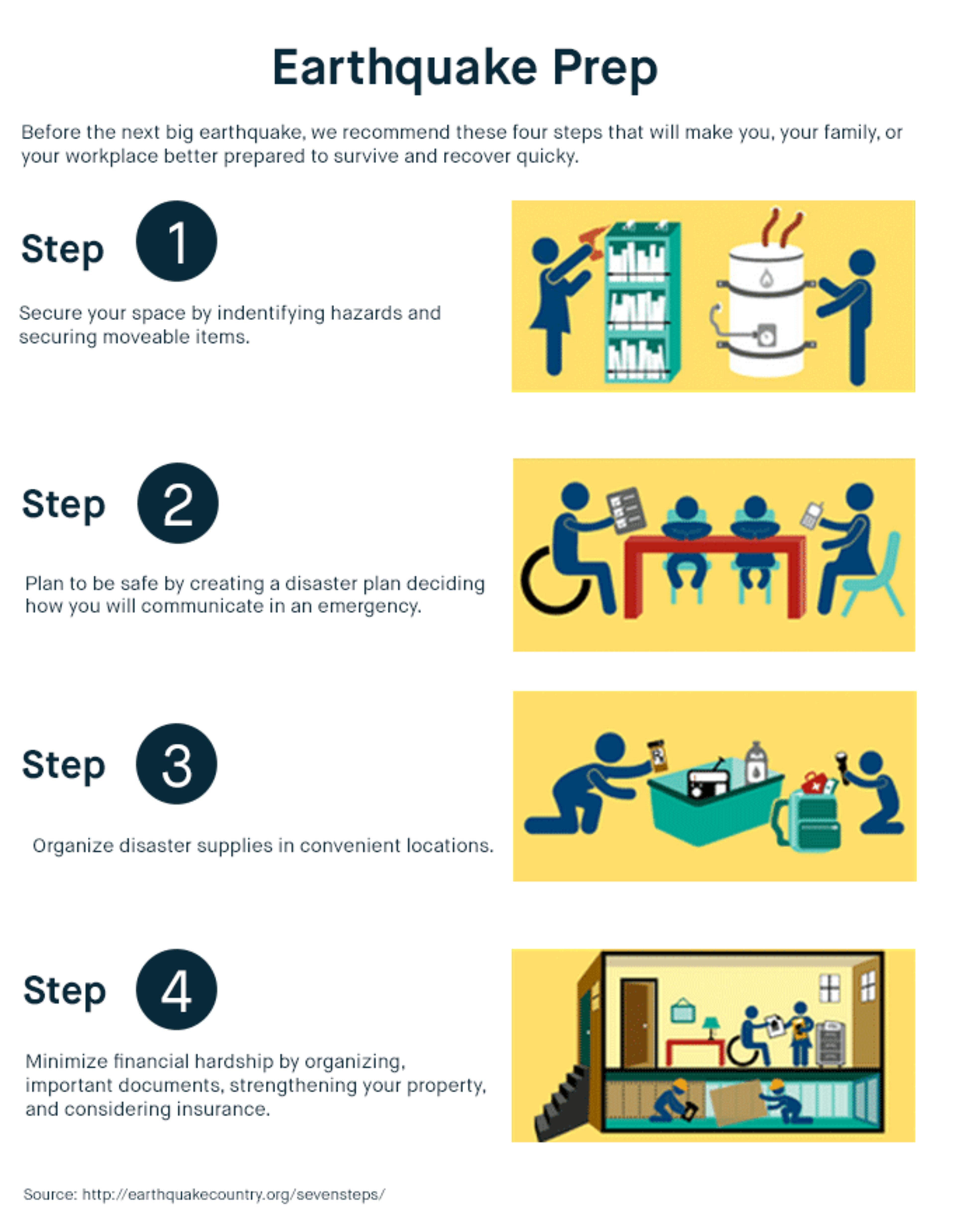
Check the foundation: Be sure to repair any wall cracks as soon as you notice them. Then get your foundation checked for signs of structural weakness or damage.
Locate your gas connection: In the event of an earthquake, you may need to cut the gas to your home to avoid fires. Be sure you know where and how to shut off your gas. If you don't know where or how to, SoCal Gas has a fantastic guide on how to shut off your gas in an emergency.
https://www.youtube.com/watch?v=WUSUiWc5wXw
Create an earthquake plan: Identify good places around your home to take cover such as sturdy desks and tables and interior door-frames. Decide on where your family will meet if people are away from home during an earthquake. This place should be away from large buildings. Designate an out of town contact person for everyone to call and check in with. This person can help your family communicate in case you can’t reach each other due to loss of phone service. Be sure to have an updated first aid kit and some stored bottled water. Check expiration dates and replace as needed.
Prepare an earthquake emergency kit: Include a flashlight and extra batteries, a two-week supply of food and water, tools like wrenches, hammers, and crowbars to shut off gas lines, garbage bags, pet supplies, extra medicine, set of clothes for each family member, windup emergency radio, and cash (ATMs will likely be down). Check out FEMA's Emergency Supply Checklist for more suggestions.
What to Do During an Earthquake
Stay put: If you're out of the house, stay where you are and resist the urge to try to get home immediately. Roadways will be jammed and unsafe.
Drop, cover, and hold on: Find a secure place, out of the way of anything that could fall, like under a desk. Get on your hands and knees and cover your head and neck. Try to protect your back by getting under something sturdy. Hold onto desk or chair legs to keep it in position over you while the ground is shaking.
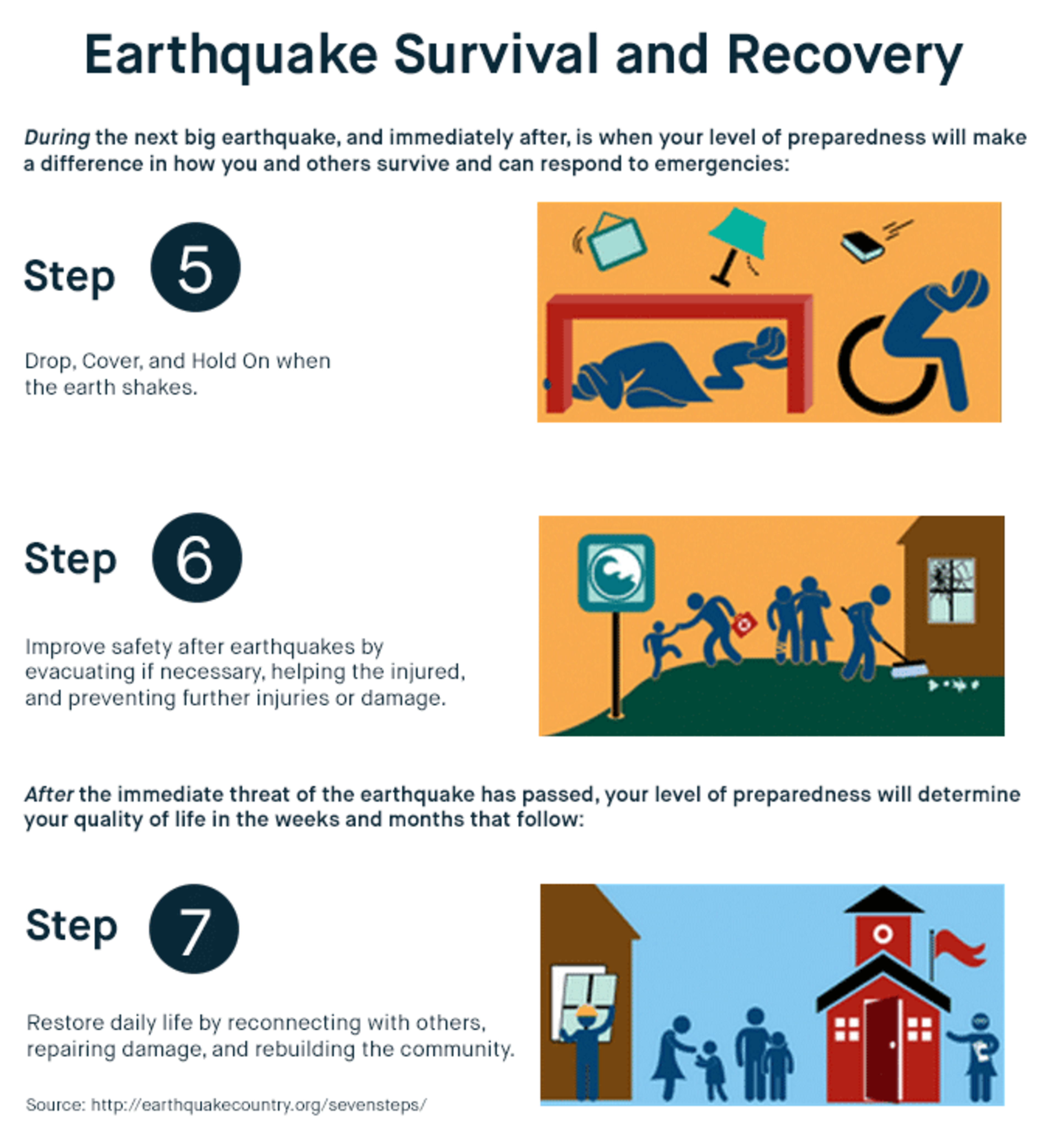
Watch for falling objects: If possible, within the first few seconds of shaking, get away from objects like bookcases, china cabinets, or open kitchen cupboards that could topple over, or that contain glass items that may fall out. Also take care to keep yourself safe from fall bricks from chimneys or light fixtures that may detach from the ceiling.
Tornado Preparedness
Tornadoes are violent storms caused by powerful thunderstorms. A tornado appears as a funnel-shaped cloud that extends from the storm in the clouds to the ground. It is accompanied by extremely dangerous, fast winds that reach up to 300 MPH. A tornado’s path of destruction can measure more than one mile wide and fifty miles long.3
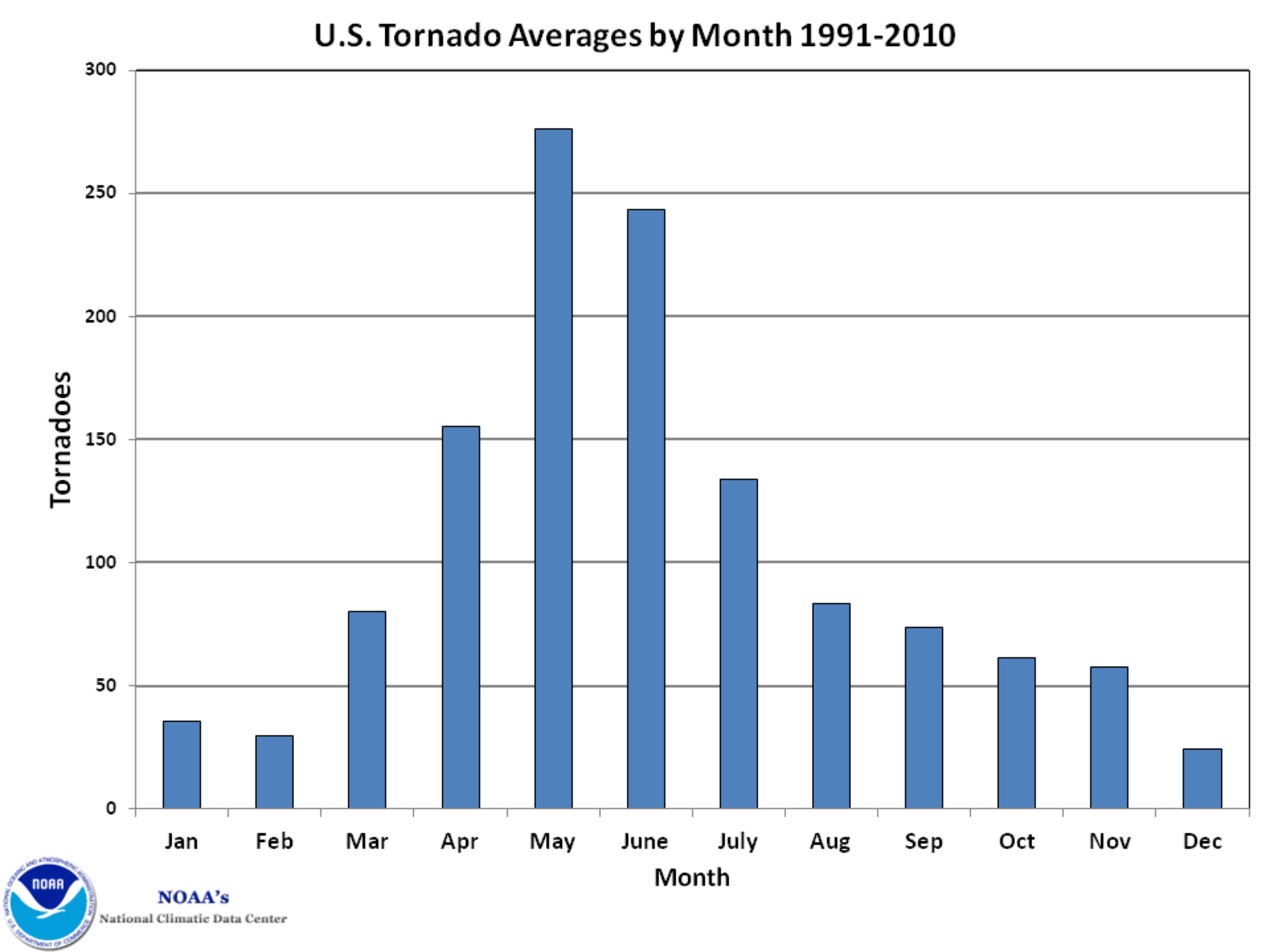
One of the keys to tornado safety is knowing the difference between a tornado watch and tornado warning. A tornado watch means conditions are favorable for severe thunderstorms to form, or that there are active thunderstorms capable of producing a tornado. On the other hand, a tornado warning is much more urgent and severe. It means a tornado is imminent or has already formed, and you should immediately take cover.
Tornadoes often occur without warning, so preparing your home in advance and knowing what to do in case of one is the best way to take precautions. We'll cover what you need to know to better prepare yourself and your home.
General Tornado Preparation Checklist
Create an emergency plan: As is the case with most natural disaster, having an emergency kit with food, water, clothes, medicine, and pet supplies is important. So is creating a plan for family communication in case people are outside of the home when the tornado hits. It’s a good practice to designate someone who lives out of state as the family’s check-in person.
Make sure your emergency kit has the following items:
A 3-day supply of drinking water (1 gallon per person per day)
All prescription medications
A first aid kit and antiseptic cleaner
Spare house and car keys
Cash and a credit card
Local maps in case there is no mobile data service
Food that won't spoil
A can opener
A weather radio and flashlights
Extra batteries
One change of clothing and footwear per person
One blanket or sleeping bag per person
Copies of all important papers (insurance, home ownership, identification, etc)
Create or identify a safe room: A safe room or wind shelter is a place where family members can seek refuge that offers more protection than other rooms in or around the home. Safe rooms below ground offer the most protection, but interior rooms on the first floor can work, too. Work with a contractor to determine if your safe room is anchored and to be sure the walls, ceiling, and door can withstand high winds
Prepare your home for high winds: Make sure your:
Walls are secured to the foundation.
Wall studs are attached to the room with hurricane clips and not simply nails.
Large objects like bookshelves are securing to the wall.
Heavy items are stored near the ground
Large appliances like water heaters are secured with flexible cables.
https://www.youtube.com/watch?v=S4eoy9e4rYI
What to Do During a Tornado
Know the signs of a tornado: Listen to your weather radio and be familiar with the signs of an impending tornado:
Wall cloud
Flying debris
Hail
Visible funnel cloud
Roaring noise
Use your safe room: Gather your family and pets in your safe room, along with your emergency kit. If you do not have a designated safe room, take shelter in a small, windowless interior room or hallway.
Evacuate mobile homes: If you are in a mobile home, evacuate to the nearest sturdy shelter or vehicle.
If you are in a vehicle: If possible, drive to the nearest sturdy building. If high winds and flying debris makes visibility impossible, pull over, keep your seatbelt on, duck your head below the window and cover yourself with a blanket or jacket.
Check for updates: If you don't have a weather radio, you can use your smartphone to download the American Red Cross' Tornado app
Wildfire Preparedness
Wildfires begin as small fires in wooded areas, often triggered by a lightning strike or human carelessness at campsites. These fires spread quickly through the dried brush and wood, aided by dry weather conditions and high winds. Although wildfires are unpredictable, you can prepare your home if you live in an area that may be at risk.

Source: Wildfiretoday.com
General Wildfire Preparation Checklist
Landscape with fire in mind: When you live in a wooded area, consider landscaping with materials and plants that do not fuel fire. If possible, create open spaces with non-flammable materials that give your home and other structures at least 30 feet of clearance between them and the forest or woods.4
In California, homeowners in wildfire-vulnerable areas are required to have at least 100 feet of "defensible space" between their homes and any trees or shrubs. Even if you are not in California, or are not required by your local fire jurisdiction, creating a defensible space can slow or stop the spread of wildfire, and protect your home from catching fire.
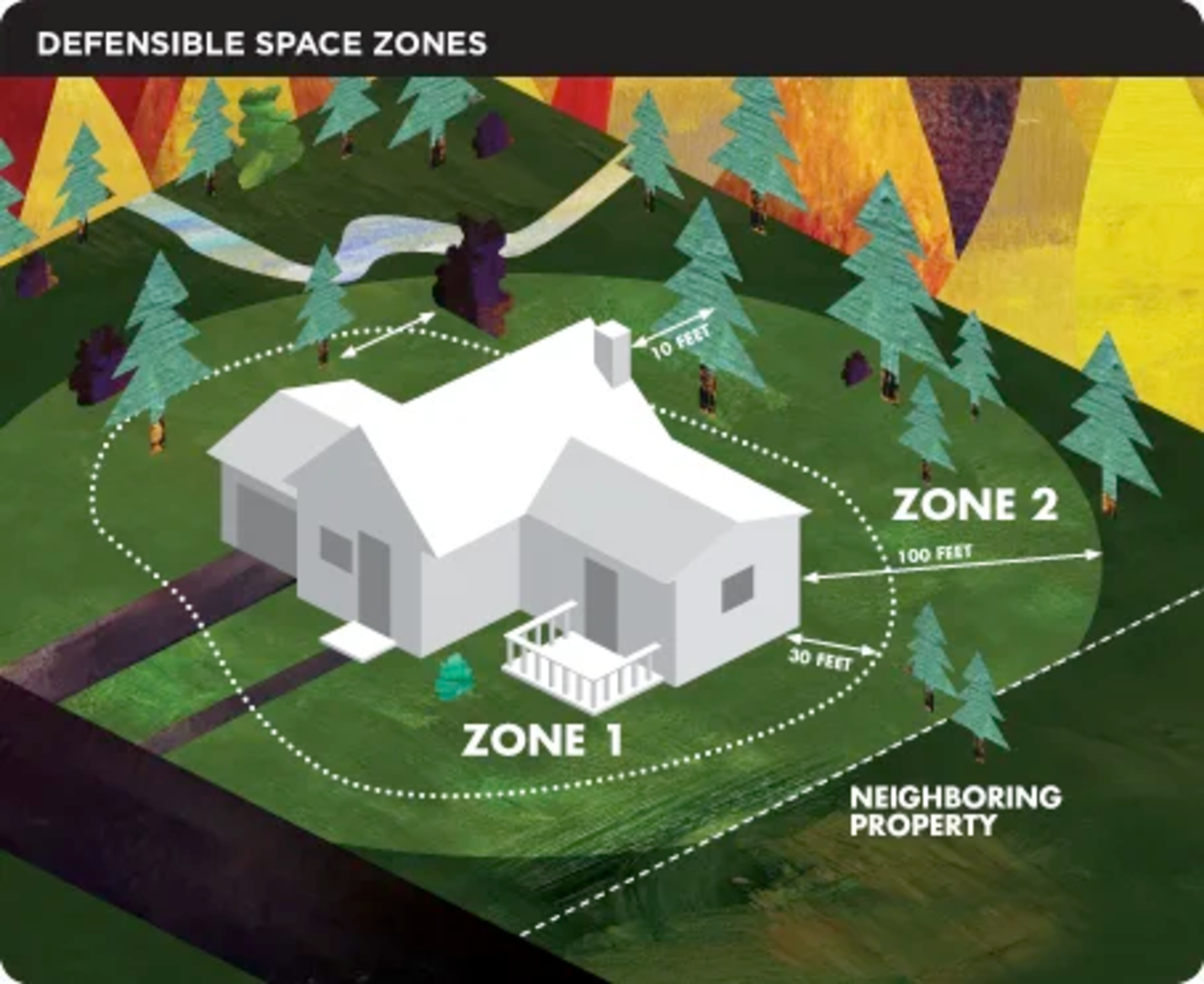
Source: http://www.readyforwildfire.org/get-ready/creating-defensible-space/[/caption]
(Zone 1): Remove all dead or flammable plants, vegetation, and leaves from your yard, windows, roof, and rain gutters, regularly trim tree branches to keep away from your home, and relocate wood piles to zone 2.
(Zone 2): Mow grass to less than 4 inches, remove fallen branches, twigs, bark, cones, and needles, and create spacing between shrubs and trees so fires cannot easily spread.
Build strategically: Use flame retardant building materials, or treat your materials with fire-resistant chemicals. It’s best to consult a home remodeler to make sure you use safe chemicals.
Practice safety: Make sure everyone in your home knows how to use a fire extinguisher.
Prepare Your Home for Wildfire
If you live in an area at-risk area, your home could be a strong wind and a few embers away from catching fire. It's important to prepare each part of your home before a fire starts.
Roofs are the most vulnerable part of a house, and homes with wood or shingle roofs are at great risk of being destroyed during a wildfire. If you live in a high-risk area, consider hiring a professional to re-roof with metal, tile, or composition.
Windows can break from strong fires, allowing flames to enter your home. Consider installing tempered glass panes in windows near trees or shrubs.
Walls and other siding materials are usually wood-based, and highly combustible. Consider treating your walls or siding with fire-retardant chemical, or remodeling with stucco, fiber cement, or other approved materials.
Chimneys and stovepipe outlets should be covered with a non-combustible screen.
Rain gutters should be cleared of all leaves and debris. You can use gutter screens to make cleaning up an easier task.
Garages should be treated with weather stripping to resist flames, and all flammable materials should be safely stored away.
Fences and decks should be constructed or treated with ignition-resistant materials.
During a Wildfire
Be ready at all times: Make sure your home has functional fire extinguishers, you can quickly shut off your electricity and gas valves, and your emergency kit is well stocked and ready to grab. Wildfires can threaten your home with just a moment’s notice, so you’ll need to be prepared to evacuate quickly.
Have an evacuation plan: If you're forced to leave your home, make sure you and your family have a designated meeting location in a safe area, and are familiar with a few different routes to get there.
Monitor air quality: The smoke and ash that accumulates in the air can irritate eyes and lungs. Keep windows and doors closed, even if your home isn’t in immediate danger.
Keep pets together: While you’re waiting to hear if it’s time to evacuate, gather all your pets into one area or room. That way, when it’s time to go, you won’t have to search for them.
Connect your garden hose: Firefighters have been known to use garden hoses to spray down roofs and put out small fires. Make your hose visible and readily available. Fill pools, hot tubs, empty garbage can, and any other large container with water and leave around the perimeter of your yard to help put out hot spots.
Use a portable weather radio: The NOAA Radio All Hazards is a national network of radio stations that broadcast continuous nearby weather updates. This is the fastest and easiest way to stay updated on a wildfire's progress, and get evacuation and recovery updates. You can find your local station listings here.
Winter Weather Preparedness
In the winter, snowstorms, blizzards, frost, freezing rain, and ice can wreak havoc on your home. The frigid temperatures, coupled with the loss of heat and power during winter weather occurrences, makes these natural disasters especially dangerous. Though winter weather itself doesn’t usually directly cause injury or death, traffic accidents, power outages, and hypothermia related to the effects of the storm can be deadly.5
Winter weather can also wreak havoc on your home. With the constant thawing and freezing associated with temperature, foundations, pipes, and electricity can be compromised due to snow and ice.
Winterize your Home
Get your heating system serviced during the Autumn season.
Use acrylic latex caulk to seal around doors, windows, pipes.
Trim trees away from your house, so if they get weighed down with snow and ice they don’t rest on the roof.
Drain your irrigation system. Leaving standing water that can freeze during the winter will cause costly damage and break your sprinkler system.
Change your furnace filters regularly.
Run fans in reverse (or clockwise) to push warm air from the ceiling to the room below.
Install storm windows and doors that reduce airflow and drafts.
Insulate pipes, windows, and walls.
Make sure flashlights and battery-powered radios are working, and keep extra batteries, candles, and matches handy.
Use rock salt or an environmentally-friendly alternative to melt ice off sidewalks.
https://www.youtube.com/watch?v=Mmchs0NppQo
Understand Signs of Frostbite and Hypothermia
If you are forced outside during extreme cold or wintry weather, be cognizant of the health risks of prolonged exposure, mainly frostbite and hypothermia. Both injuries occur because of the body's limited ability to generate heat and limit heat loss from its core (organs) or exterior (skin, muscles, limbs).
Frostbite
Frostbite is a localized injury caused by exposure to freezing or near-freezing temperatures. It commonly affects extremities, such as feet, toes, fingers, and hands, but can take place anywhere on the body. There are three stages of frostbite:
Frostnip: Numbed skin that has turned white in color. This happens because blood vessels constrict, causing inadequate blood and oxygen flow to the tissues. There is little chance of permanent damage.
Superficial Frostbite: Skin temperature drops below 24.8 degrees Fahrenheit and turns white or blue. Blistering may occur, and proper professional medical treatment is required to prevent severe or permanent damage.
Deep Frostbite: This is a life-threatening injury. At this stage, the skin turns white, blotchy, and/or blue. Large blisters can form after rewarming, and the damaged area turns black and hard as the tissue dies. The tissue underneath the skin has been damaged, and can only be treated by a medical professional. In extreme cases, blood vessels can clot, causing irreversibly damaged tissue and loss of blood flow, and amputation is likely required.
Hypothermia
Hypothermia is a decrease in core body temperature from exposure to the cold. However, in some settings it can occur from extended exposure to mild temperatures. From 1999 to 2011, there was an average of 1,301 annual U.S. deaths due to hypothermia.
Your body's defense against the cold are very limited. If you are exposed to the cold for an extended period, the blood vessels in your skin constrict to reduce heat loss and to keep blood flowing to the vital organs. Shivering and increased release of hormones results in more heat produced, but this is usually insufficient to maintain your body's temperature in cold environments. Thus, your best protection is to wear layered, warm clothing, and leave as little of your body exposed to the cold as possible.
How to Treat Frostbite and Hypothermia
Frostbite and Hypothermia commonly occur together, but the effects can be reduced with quick treatment.
If someone is is suffering from hypothermia, contact an emergency medical professional immediately. To reduce heat loss, replace all wet clothing with warm and dry ones.
Do not try to rapidly rewarm someone with hot water or by massaging cold extremities, as this can lead so serious tissue damage. If the person suffering hypothermia has no pulse, being CPR and do not stop until medical personnel arrive.
Frostnip is easily treatable without a medical professional. Consider these treatments as needed:
Get out of the cold
Protect your skin from further exposure with layered clothing, hats, and gloves
Gently rewarm frostbitten areas with warm water (less than 108 degrees)
Take ibuprofen
If your skin turns red and you feel a tingling or burning sensation, normal blood flow is returning to that area.
If someone is suffering from frostbite and hypothermia, treat the hypothermia symptoms first. If extremities are warmed before the body's core, blood can pool in the extremities and possibly cause cardiac arrest.
Additional Winter Preparation Resources
What to do before, during, and after winter storms and extreme cold – FEMA
Winter Weather Safety and Awareness – National Weather Service
Winter Storm Fire Safety – US Fire Administration/FEMA
Winter Storm Preparedness – American Red Cross
Winter, Your Car, and You – National Safety Council
Flood Preparedness
Because weather can change at a moment’s notice, it’s important to be prepared for floods. Flooding occurs when waterways are burdened with excessive water, usually from heavy rainfall. It can happen any time of the year, but is common in the spring as snow melts and seasonal rains pick up. Additionally, flash flooding can happen in low-lying areas during or after intense rain or a dam collapse.

Even dry areas affected by wildfires are at risk of flooding. When trees, grass, and other vegetation are gone, rainwater is not absorbed as quickly and can cause serious damage. Properties downstream from burn sites are at the greatest risk of flooding.
Heavy rains can overtax a city’s drainage system, causing water to back up into streets and onto your property. Drainage systems also get clogged from trash and litter, making it possible that water will have difficulty flowing underground during even light rains.
Prepare for a Flood
Know your risk: Floods happen in all 50 states, so it’s best to know your level of risk.6 Understand if you live in a high-risk area by checking out FEMA flood maps.
Consider extra insurance: Most standard homeowners or renters insurance policies do not cover flood damage. If you’re in a high-risk area, consider buying flood insurance. Flood insurance will cover direct physical losses due to flooding, as well as loss from flood-related erosion.7
Clean your gutters: Gutters direct rainwater away from your house. When gutters are clogged with leaves and other debris, water will collect around your home’s foundation and basement, especially if the land slopes toward your house. In the event of heavy rains, you don’t want additional water collecting around your home!
Raise your electrical system: If you live in a flood-prone area, you may want to hire an electrician to raise your sockets, wiring, circuits, and other electrical hardware above your area's base flood elevation. Raising electrical system components above this anticipated flood level will help prevent damage to your electrical system and avoid the potential for short circuit fires.
Protect HVAC systems: Flooding can destroy HVAC equipment, depending on how long the system is under water. Consider hiring a contractor to move the equipment to an upper floor or build a flood-proof wall around your current setup.
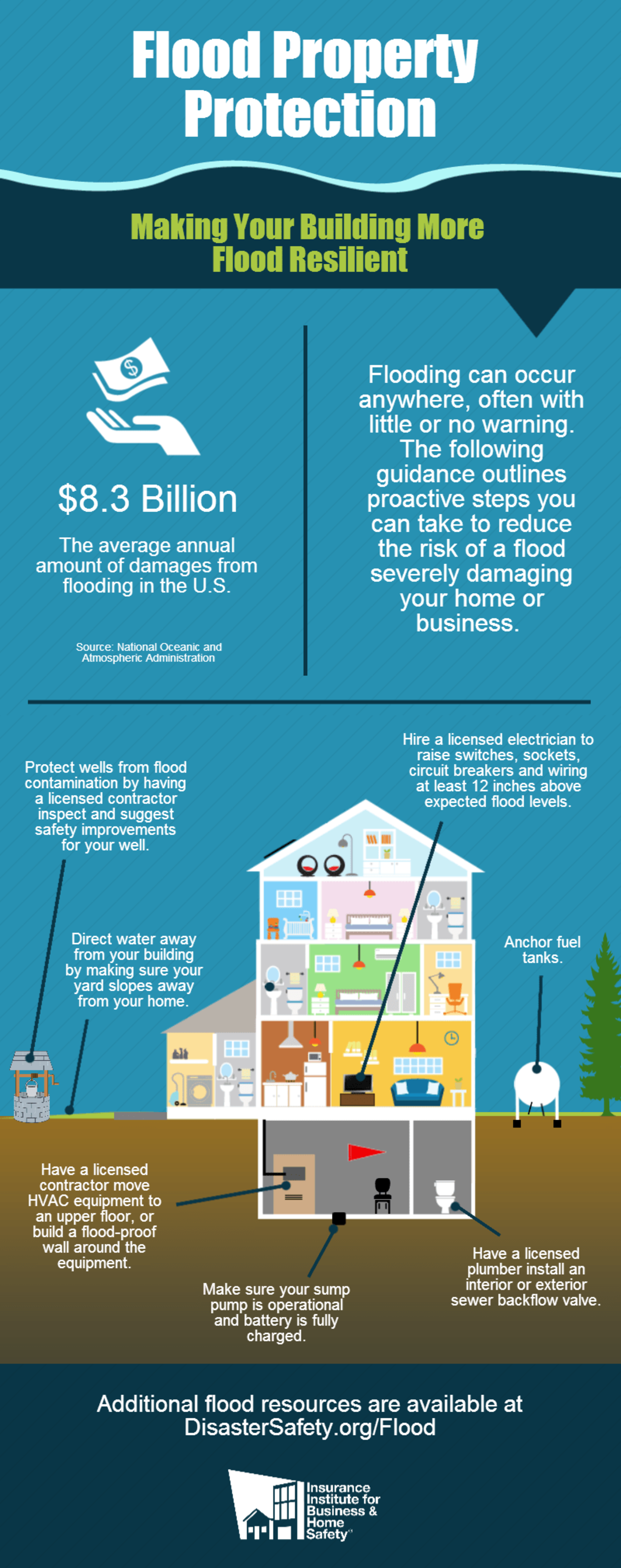
Source: Flood-Property-Protection_IBHS
Install an automatic sump pump: A sump pump is used to remove water accumulated in the sump basin of your home’s basement. Automatic sump pumps turn on when the water in the basin reaches a certain level so that it will start working before there’s serious flooding.
https://www.youtube.com/watch?v=E33soAR0Nts
Flood Safety and Recovery
Move to higher ground: You may get some warning from the National Weather Service about the possibility of flash flooding. If possible, follow your flood evacuation plan and seek shelter away from low-lying areas.
Disconnect utilities: Be sure to turn off your gas and electric lines. Electrocution during flooding is a real threat; don’t touch electrical equipment if the environment is wet or if you’re standing in water.
Do not cross moving water: Attempting to drive through or walk through moving water is dangerous. You or your vehicle can be swept away by the current.
Drought Preparedness
Droughts, or extended periods of insufficient rainfall, can occur anywhere. As the climate is heating up, scientists predict that droughts will become more frequent and more severe than ever before.
There are four common ways to measure drought: lack of rain or precipitation, lack of moisture in the soil, low water levels in lakes, and low levels of drinking/household water. Freshwater makes up only .003% of the water on the Earth’s surface, making conservation the best way to prepare for declining water availability.8 Multi-year droughts, like the one recently suffered by the western and southwest regions of the U.S., bring with it crop loss, water shortages, and water restrictions for residents.
General Drought Preparation
By conserving water now, you’re helping to preserve water as an essential natural resource.
Repair plumbing: Look for leaks and dripping pipes around your house. Slow leaks add up over time and can waste close to 2,700 gallons of water each year.9
Reconsider your landscaping: Watering the lawn is a major use of water. In some states, watering the lawn happens year-round due to the temperate weather. Americans use an estimated 9 billion gallons of water on landscaping daily, and that as much as 50% of that water is wasted by using inefficient watering systems.10 As an alternative, try using an EPA approved WaterSense irrigation system, or switch to a xeriscaped garden.
Redesign your bathroom: Showering accounts for about 17% of home water use. A family that uses a low-flow showerhead can save nearly 2,900 gallons of water each year.11 In addition, water-efficient toilets can reduce home water usage by up to 13,000 gallons of water.12

Conservation Tips During Drought
Follow local restrictions: During a drought, your town, city, or state may implement restrictions on water use. Do not water your lawn, wash your car, or use water in non-essential ways as outlined by your regional authorities. These restrictions are put in place to ensure that enough water will be available for essential reasons.
Avoid excess water use:
In the bathroom: Take quick showers, flush the toilet only when necessary, and don’t let the faucet run while brushing your teeth. In fact, while you’re showering, use a bucket to collect run off and use that water to flush the toilet or water plants.
In the kitchen: Do not pre-rinse dishes before washing. Instead of running water to wait for it to get hot, boil water or heat in the microwave.
Outside: Don’t let sprinklers and irrigation systems run unattended outside. When you lawn needs watering, do so in the early morning to avoid evaporation.13
Heatwave Preparedness
A heat wave is defined as several days in a row of unusually high temperatures that can potentially harm humans.14 Though it may not be thought of as a natural disaster risk, extreme heat was the leading cause of weather-related deaths from 2000-2009.15 Children, the elderly, and people who work outdoors are most susceptible to heat-related illness, but anyone can fall victim to heat exhaustion, heat stroke, and heat cramps.
Due to changing climate conditions, heat waves are predicted to become more frequent and intense. One study projects air temperatures to rise between 3 and 11 degrees within the century.

There are many ways to keep your family and home safe from heat-related illnesses that may happen during a heat wave. A few simple steps of precaution can help keep your home comfortable during a heat wave.
General Heatwave Preparation
Insulate your home: Keep hot air out and cool air in with well-insulated walls. If your home is older, you may want to consider replacing old batt insulation with new liquid foam insulation. Liquid foam not only acts as an effective insulator but can also take the place of other weatherization tasks, such as caulking and taping joints.16
Replace windows: Old windows can let out at much as 25% of the cool air in your home. Consider double pane windows with high-performance glass. Look for the EPA’s ENERGY STAR ® label to ensure quality, energy efficient windows.17
Cover windows: Highly reflective interior window blinds can reduce a room's heat gain by as much as 45%. If you have drapes, their ability to reduce heat transfer depends on the color and type of fabric, but studies have shown draperies to reduce heat gain by 33%.
Invest in fans: Ceiling, window, and floor fans use up less energy than an AC unit and can provide relief from the heat. Fans don’t cool down rooms, but they help cool off people by evaporating sweat and moisture. If you have a health condition that requires cooler temperatures, make sure your window air conditioner is snugly fitted and airtight. If you have a Central AC unit, make sure your ventilation system is fully insulated.
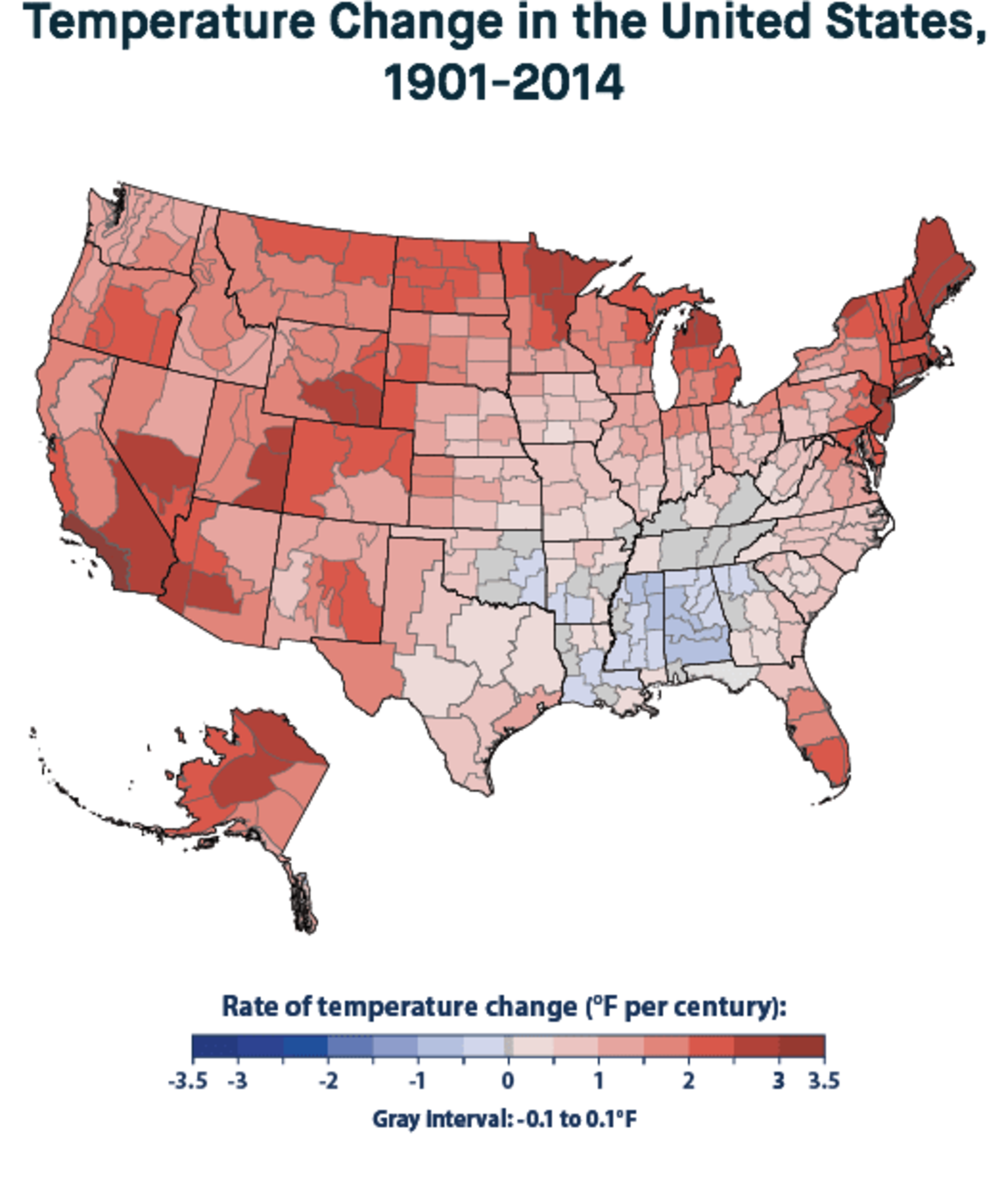
What to Do During a Heatwave
Double check your car: Don’t leave children or pets in the car, even for a few minutes. The temperature inside a vehicle can rise quickly.
Stay inside: Don’t risk overexerting yourself in the high temperatures, especially if you’re not used to the extreme heat. If you live in a multi-floor home, your first floor or basement will be cooler than upstairs rooms. Also, avoid direct sun exposure when possible.
Wear light, breathable clothing: Light colored clothing made of cotton, linen, and rayon are good choices during heat waves. The light color will reflect heat and the natural fibers allow the skin to breathe and they absorb moisture. Fabrics like polyester, silk, and wool tend to retain heat.
Relax: Avoid any strenuous tasks or exercise during the hottest parts of the day. If you must work during peak temperatures, take regular breaks and work alongside someone else.
Hydrate: Be sure to drink water regularly. Beverages like juice and sports drinks will help you replenish the electrolytes and minerals you lose through sweat. Avoid drinks like alcohol and coffee that can stimulate the metabolism and warm the body.
Don’t leave pets outside: Your pets are covered in fur and feathers, making it more difficult for them to cool down in extreme temperatures. Make sure they have access to plenty of water and a place to cool down.
Check on elderly neighbors: Your older neighbors or those with chronic health problems may not be able to take adequate precautions during a heat wave. Be sure to check in on anyone you think may require extra assistance when the temperatures boil over.
Go to a community center: In many cities, local libraries and community centers let residents enjoy cool air conditioning throughout the day. If you do not have air conditioning and your home is uncomfortably hot, these public buildings are a pleasant alternative.
Understand Signs of Heat Illness
Heat illness can be deadly, but is easily preventable. In normal conditions, your body cools itself with sweat, but in extreme heat this may not be sufficient. If you must be outside during a heat wave, make sure you take breaks, hydrate regularly, and stay in the shade as much as possible.
Be cautious if you or a friend or loved one experiences any of these symptoms during extreme heat, and seek immediate medical help if symptoms get worse.
Cramps are an early warning of dehydration. These muscle strains and spasms are caused by a depletion of water, salts, and minerals. The best remedy is to rest and drink a sports drink. In extreme cases, intravenous fluid may be needed.
Heat exhaustion occurs when your body pushes blood to the skin in an effort to cool off. This takes blood from your vital organs, which may cause paleness, nausea, dizziness, or fainting. This requires immediate rest and rehydration in a cool area.
Heat stroke is the most severe and deadly heat illness, and occurs when you are so hot and dehydrated you can't sweat to cool their body. There may be sweat on your skin, but little or no new sweat is being produced. Other symptoms include unconsciousness, seizures, and delirium. Heat stroke a life-threatening emergency situation, and emergency medical services should be called immediately. In the meantime, cool off with ice packets, cold water, and fans.
The fastest way to cool yourself or someone else off is to target the body's pulse points, such as your wrist and neck. The reason you can feel your pulse at these spots is because blood vessels are very close to the skin's surface. Because they are so close, you can quickly cool off by pouring water on these spots. Other pulse points include the insides of your elbows and knees, the tops of your feet, inner ankles, and your temples.
Additional Natural Disaster Resources
Mudslide and Landslide Preparedness
Landslides take place in every state in the U.S. The Appalachian, Rocky, and Pacific Coastal mountain ranges see the most severe landslides in the country, though any sloped area covered with rocks or other loose materials is at risk. Mudslides are typically caused by unusually heavy rainfall or a sudden thaw and result in similar fast-falling debris. Each year, landslides and mudslides cause about $1 billion in damage, between 25 and 50 deaths, and hundreds of injuries.18
General Preparation Tips
Consider location: Before you buy or build a home, assess the surrounding landscape. Don’t build structures near steep inclines, mountain edges, or natural erosion pathways.
Protect pipes: Use flexible pipe fittings to avoid gas and water leaks. The flexible pipe fittings are less likely to break. Unfortunately, this is not a DIY fix. The pipes should only be installed by your utility company.
Use plants wisely: Ground cover will help keep the soil around your home in place. Loose dirt and gravel are more likely to run off as erosion. It’s best to talk to a local landscaper to better understand your options.
Build walls: Retaining walls can help keep landslide debris from damaging your home. They can also help fortify the ground by resisting the lateral pressure from soil on a slope. Deflection walls can be built in areas where mudslides are an issue. These walls help direct the flow of mud around or away from buildings.
What to Do During a Landslide or Mudslide
Stay alert: If it’s raining heavily and you live in a mudslide or landslide-prone area, keep a weather radio on and listen for alerts. Be aware of any noises outside that may indicate moving debris, such as branches cracking or boulders rubbing together.
Move upstairs: If possible, move to a second story room, so that you’re out of the direct path of landslide or mudslide debris as it travels.
Evacuate: If it’s safe to do so, evacuate as quickly as possible. Don’t try to gather belongings or save things in your house; worry only about your family’s safety.
Thunderstorm Preparedness
Though it’s loud and attention-grabbing, thunder is not the real danger during a storm, lightning is. It’s one of the top three weather-related killers in the US, causing more than 50 deaths and hundreds of injuries each year. Those people who survive lightning strikes often suffer long-term effects such as burns, blindness, and brain damage.

During a Lightning Storm
Go inside: Seek shelter and stay there for 30 minutes after you last year thunder. Avoid electrical appliances: Stay away from direct contact with wired devices, including corded phones and computers.
Be careful around plumbing and concrete surfaces: Anywhere water is present has the potential to conduct ground currents during a lightning strike. Concrete basement slabs can hold in moisture and be dangerous.
If you’re outside
Find the lowest ground possible
Stay away from tall isolated objects like trees and flagpoles
Stop swimming and get out of pools, lakes, and any bodies of water
Take shelter in a car—roll up windows and don’t touch any metal car parts
Tsunami Preparedness
Tsunamis are large fast-moving waves caused by underwater disturbances such as earthquakes, volcanic eruption, and landslides. They can quickly make landfall and when they do, they destroy everything in their paths. The Alaska, Hawaii, and the Pacific coast are the areas of the U.S. most at risk for tsunamis.19
During a Tsunami
Follow evacuation orders: Listen to authorities and leave your location immediately. Bring your pets with you.
Move inland and to higher ground: Find a place at least 2 miles inland and 100 feet above sea level. Stay away from the beach and coastline.
Volcano Preparedness
Volcanic eruptions release hot gasses, ash, lava, and rock into the surrounding environment and up to 100 miles away. Volcanoes can also trigger mudslides and floods in nearby valleys.20 If you live in an area with volcanic activity, such as Alaska, Hawaii, and the Pacific Northwest, you should be prepared by learning about your community’s warning systems.
During a Volcano
Follow evacuation orders: It is not safe to try to wait out a volcanic eruption in your home. In addition to the molten lava and potential for mudslides, suffocation from ash is a health threat during volcanic activity. Protect yourself: While evacuating, wear a long-sleeved shirt and full-length pants. Also wear goggles and a mask over your nose and mouth. Ash can cause serious health issues. Avoid certain areas: Going to areas downwind from a volcano during eruption will mean you’re at risk for increased debris and ash fall. Low-lying areas, like stream beds and river valleys, are at risk for flooding and mudflows.
General Natural Disaster Preparedness Tips
Your home is your haven. It’s where you make memories and raise your family. You want to keep it safe at all costs, especially when threatened by a natural disaster.

Because natural disasters are usually hard, if not impossible, to predict, the best thing you can do for your family and your home. Here are a few tips on general disaster preparedness:
Safe rooms: Depending on the weather risks your area faces, you may want to invest in building a reinforced safe room somewhere in your house. You may think this is excessive preparation or financially unrealistic, but FEMA offers a variety of grants to help people remodel their homes for disaster preparation.
Emergency kit: Assemble an emergency kit. This may seem excessive or unwarranted, but it’s easy to create and is immensely useful if disaster strikes.
Document storage: Store important documents in a fireproof and flood-proof safe. Put copies of documents like insurance policies, home and auto titles, licenses or IDs, credit cards, and social security cards in your emergency kit. Don’t forget to upload images of these documents and save in your email or cloud-based storage account.
Infants: If you have a young child, make sure to include baby supplies, like formula, diapers, bottles, and baby wipes in your emergency kit.
Senior citizens: If you are a senior citizen or you plan to care for someone who is elderly, be sure to understand discuss what will happen in case of a disaster. Friends, relatives, or neighbors who will assist you during an emergency need to know how to operate any special equipment you may require. In addition, your emergency kit should include extra wheelchair batteries, oxygen, catheters, or any other applicable medical device. Be sure to give copies of make and model numbers of your medical devices to someone who lives out of state, so you can rely on them if needed.
People with special needs: Ensure that your emergency kit contains medical equipment, batteries for assistive technology, food for specialized diets, medicines, manual wheelchair, and supplies for service animals as applicable.
Pets: If you evacuate, do not leave your pets behind. They will likely not survive on their own and if they do, they may get lost and be unable to find their way home. Before an evacuation is necessary, discuss logistics with your local shelter. Many will not allow pets inside. Make a backup plan with out of town friends or relatives who would be willing to host you and your pets. Don’t forget pet supplies in your emergency kit.
Conclusion
It’s important to understand the risks associated with where your home is located. Taking adequate precautions and making preparation means you’ll be ready if a natural disaster strikes. If you can't make all these preparations alone, don't be afraid to seek the help of a licensed professional.
Find Home Repair Services Near Me.
Remember to listen to local authorities and evacuate when necessary. Though you don’t want to lose your home in the event of a natural disaster, it’s important that your first concern be your family and pets. By fortifying your home against natural disasters common to your area, you’re taking the best steps possible to ensure a positive outcome.
Dick WagnerAuthor
Dick Wagner has nearly two decades of experience working in disaster restoration and recovery. He leads specialized training classes for insurance agents, real estate agents, licensed plumbers, and HVAC technicians on topics such as mold, structural drying, fire & smoke restoration, and replacement cost pricing. He also provides one-on-one consulting for disaster recovery and response contractors.
Sources
1. http://www.usnews.com/news/blogs/data-mine/2014/06/18/deadliest-costliest-hurricanes-in-us-history
2. http://oceantoday.noaa.gov/hurricanestormsurge/
3. http://www.ready.gov/tornadoes
4. http://celosangeles.ucanr.edu/Environmental_Horticulture/Landscaping_for_Wildfire_Protection/
5. http://www.ready.gov/winter-weather
6. https://www.floodsmart.gov/
7. http://www.iii.org/issue-update/flood-insurance
8. https://www.dosomething.org/facts/11-facts-about-droughts
9. http://www.ready.gov/drought
10. https://www.epa.gov/watersense/outdoors
11. http://www.epa.gov/WaterSense/products/showerheads.html
12. http://www.epa.gov/WaterSense/products/toilets.html
13. http://www.ready.gov/drought
14. http://www.cdc.gov/climateandhealth/pubs/ClimateChangeandExtremeHeatEvents.pdf
15. http://www.nws.noaa.gov/om/hazstats.shtml
16. http://energy.gov/energysaver/articles/types-insulation
17. http://energy.gov/energysaver/articles/tips-windows
18. http://landslides.usgs.gov/learn/ls101.php


